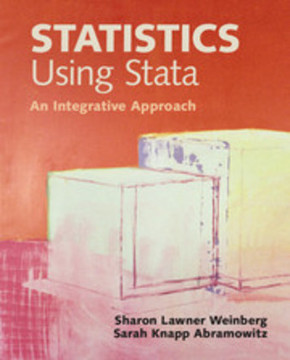Statistics Using Stata - An Integrative Approach
| Verlag | Cambridge University Press |
| Auflage | 2016 |
| Seiten | 640 |
| Format | 20,3 x 25,5 x 3,0 cm |
| Gewicht | 1340 g |
| Artikeltyp | Englisches Buch |
| ISBN-10 | 1107461189 |
| EAN | 9781107461185 |
| Bestell-Nr | 10746118UA |
Engaging and accessible, this comprehensive introduction to statistics integrates Stata commands with numerous examples based on real data.
Engaging and accessible to students from a wide variety of mathematical backgrounds, Statistics Using Stata combines the teaching of statistical concepts with the acquisition of the popular Stata software package. It closely aligns Stata commands with numerous examples based on real data, enabling students to develop a deep understanding of statistics in a way that reflects statistical practice. Capitalizing on the fact that Stata has both a menu-driven 'point and click' and program syntax interface, the text guides students effectively from the comfortable 'point and click' environment to the beginnings of statistical programming. Its comprehensive coverage of essential topics gives instructors flexibility in curriculum planning and provides students with more advanced material to prepare them for future work. Online resources - including complete solutions to exercises, PowerPoint slides, and Stata syntax (do-files) for each chapter - allow students to review independently and a dapt codes to solve new problems, reinforcing their programming skills.
Inhaltsverzeichnis:
1. Introduction; 2. Examining univariate distributions; 3. Measures of location, spread, and skewness; 4. Re-expressing variables; 5. Exploring relationships between two variables; 6. Simple linear regression; 7. Probability fundamentals; 8. Theoretical probability models; 9. The role of sampling in inferential statistics; 10. Inferences involving the mean of a single population when s is known; 11. Inferences involving the mean when s is not known: one- and two-sample designs; 12. Research design: introduction and overview; 13. One-way analysis of variance; 14. Two-way analysis of variance; 15. Correlation and simple regression as inferential techniques; 16. An introduction to multiple regression; 17. Nonparametric methods.

